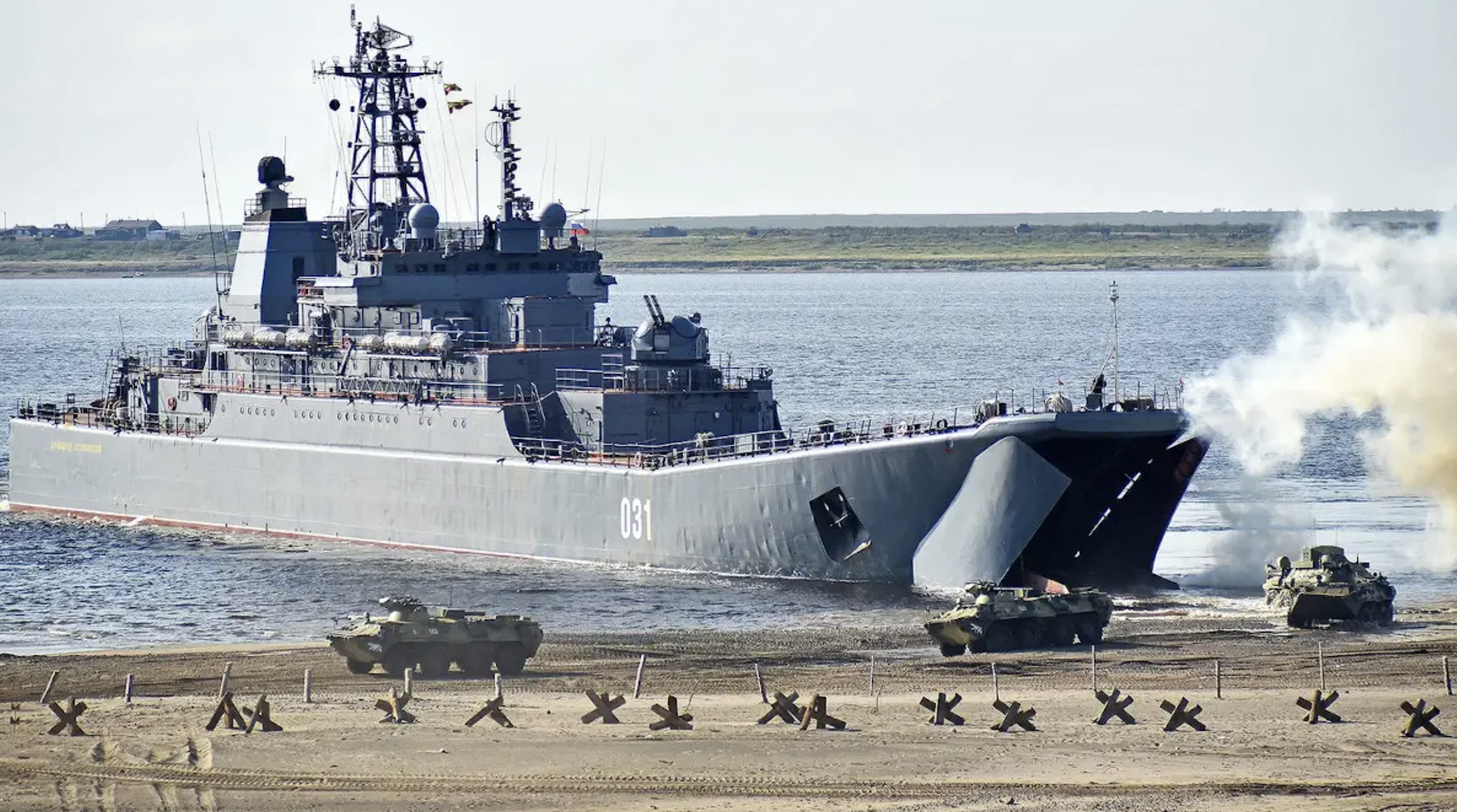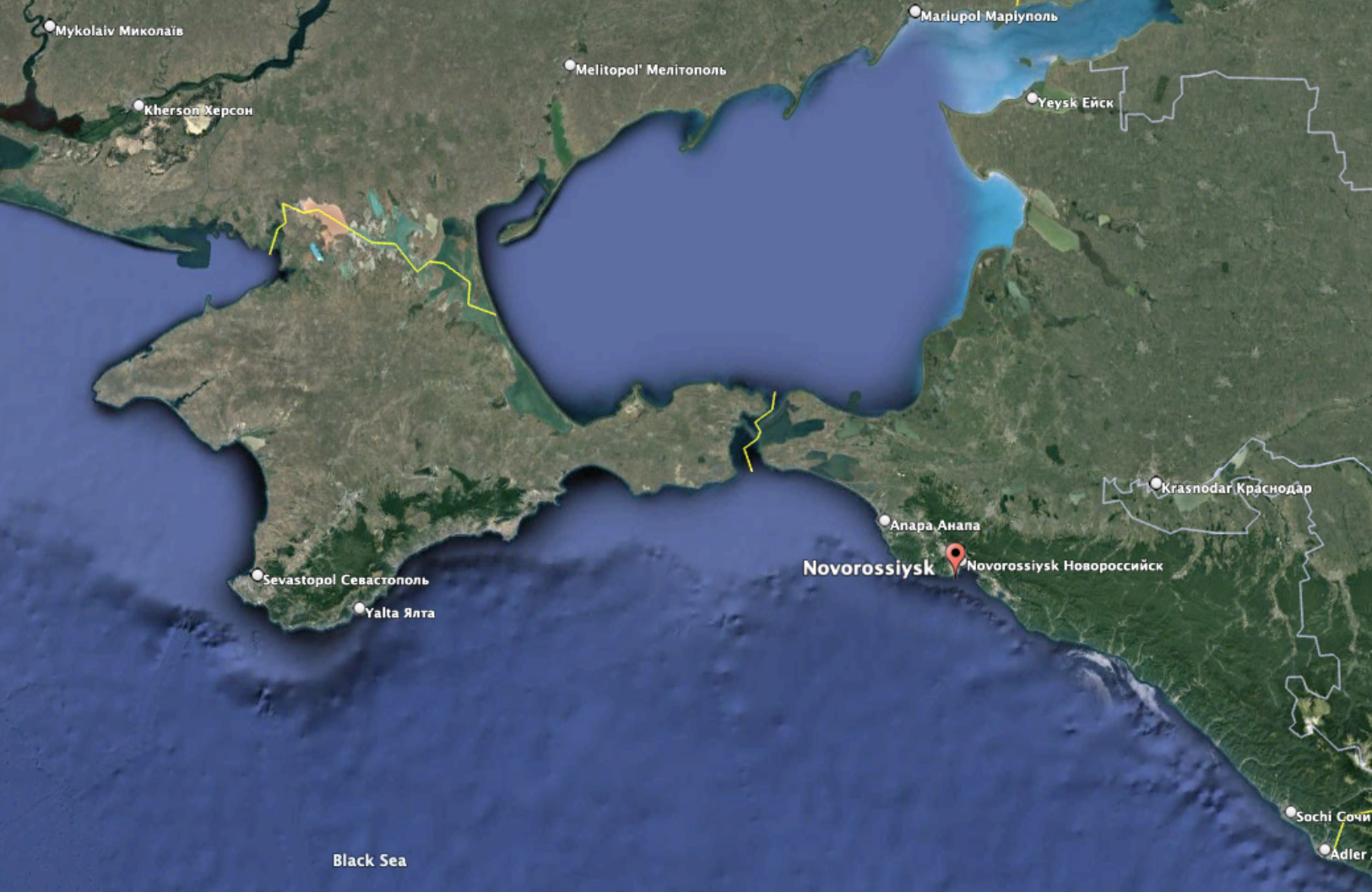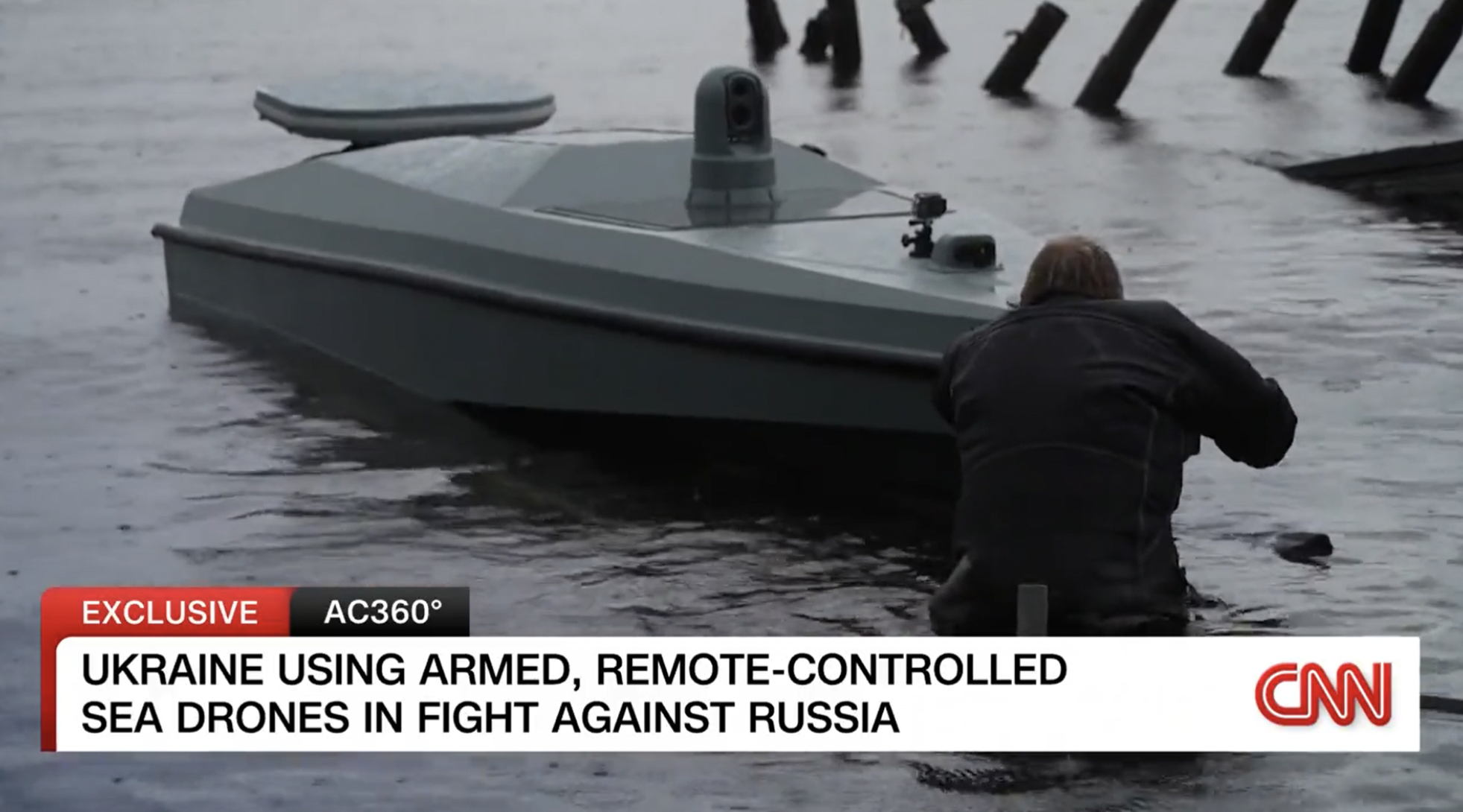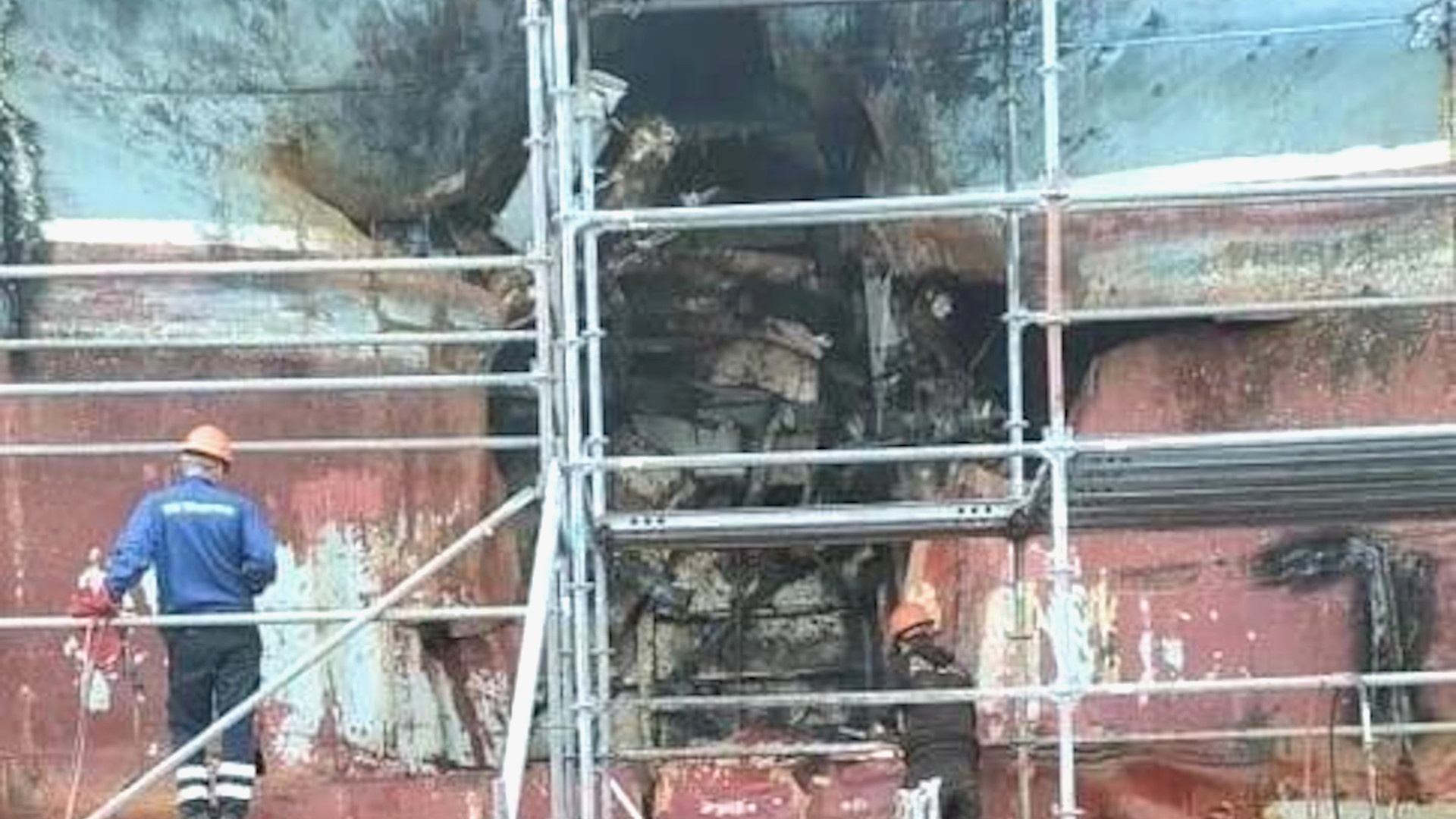A new photo shows severe damage sustained by the Russian Navy’s Ropucha class amphibious landing ship Olenegorsky Gornyak after falling victim to a Ukrainian drone boat attack last week. The vessel was reportedly struck close to the Black Sea port of Novorossiysk, where it is now in dry dock, as you can read about more in The War Zone’s previous reporting on this incident. This comes amid a recent spate of Ukrainian uncrewed surface vessel attacks on Russian ships and other targets, including a separate incident that left a hole in the hull of the commercial tanker ship Sig.
The new photo of Olenegorsky Gornyak, which began to circulate on social media in the past day or so, shows the ship undergoing repairs, or at least an assessment of the extent of the damage, while in a floating dock in Novorossiysk. Most apparent is the large hole that was torn in the port side of the ship.
Shipyard workers are visible in the picture and a rough visual comparison between them and the hole suggests that the latter could be around 12 feet high and almost as wide. From what can be seen, most of the area penetrated appears to be below the waterline, although there are also very extensive black scorch marks above the waterline.
The location and extent of the damage Olenegorsky Gornyak that can be seen in the new picture of the ship in dry dock are consistent with other imagery and details about the attack that have previously emerged. A video that had previously emerged, which was purportedly taken from the Ukrainian drone boat as it approached the landing ship, showed it aiming for the vessel’s port side. The incident, which took place early on the morning of August 4, had left the ship listing heavily to port and sitting low in the water.

A Ukrainian intelligence source told Reuters that one or more USVs were involved in what was a joint operation by the Ukrainian Navy and the Security Service of Ukraine, or SBU.
“As a result of the attack, the Olenegorsky Gornyak sustained a serious hole and is currently unable to carry out its combat missions,” the same source claimed.
The Ropucha class ships were built during the Cold War and can carry significant numbers of tanks, other armored vehicles, and troops, as well as other cargo, and bring it right to a beachhead during an amphibious operation. Ahead of the full-scale Russian invasion of Ukraine, additional examples were brought to the Black Sea from the Baltic (where the Olenegorsky Gornyak is normally based). Since then, these vessels have played an important role in moving materiel around the Black Sea and they have even been used to ferry commercial vehicles to and from Russian-occupied Crimea in the wake of the attacks on bridges connecting it with the Russian mainland.

Additional pictures and video of the aftermath of the August 4 attack showed the response efforts and Olenegorsky Gornyak eventually being towed back to Novorossiysk.
While the Russian Ministry of Defense quickly acknowledged that the attack had taken place, it initially claimed that it was repelled, with the USVs being destroyed by Russian warships. Clearly, the warship was hit, but there is so far no evidence of any other USVs having been destroyed in the process.
Satellite imagery subsequently confirmed the landing ship was moored at the Novorossiysk naval base with what may have been oil leaking from it.
Additional satellite imagery showed that the Olenegorsky Gornyak had been moved to a dry dock in Novorossiysk as of August 8, as The War Zone previously reported.
A new photo of the vessel in its floating dock appeared online yesterday, although the extent of the damage was not immediately obvious.
Though the specific details about the damage to Olenegorsky Gornyak remain limited, the new picture makes clear that it is significant. This, in turn, once again reinforces the real threat that Ukrainian explosive-laden USVs pose and underscores their value in the country’s activities against Russia in and around the Black Sea.
The attack on Olenegorsky Gornyak was just one of a string of incidents involving USVs in recent months in this area. The SBU took responsibility for a large-scale drone attack on Russian Navy Black Sea Fleet ships in the port of Sevastopol, in Russian-occupied Crimea, last October. There have since been repeated attempts to attack that same key port as well as individual attacks made on Russian ships of the Black Sea Fleet operating far offshore. USVs also were reportedly responsible for the recent attack on the Kerch Bridge that connects Crimea with the Russian mainland.
The area around the port of Novorossiysk has come under attack on several occasions, too, including an attempted USV strike last November. On August 4 this year, the same day that the Olenegorsky Gornyak was hit, there were reports of an attempted drone boat attack on nearby oil infrastructure.
What is notable about the Novorossiysk attack is the ability of Ukrainian USVs to cover considerable distances to attack their targets. The port of Novorossiysk is roughly 420 miles from the closest Ukrainian-held shores.

As well as considerable reach, the evidence from the attack on the Olenegorsky Gornyak — as well as from the aftermath of the drone boat attack on the Sig, a Russian tanker ship, which also took place on August 4 — suggests that the destructive power of these USVs is also increasing. After both attacks, Ukrainian intelligence sources claimed that the USVs that had been employed carried warheads weighing 450 kilograms or a little under 1,000 pounds.
In addition, while we don’t know what type of USV was used in the attack on the Olenegorsky Gornyak, the video purportedly showing the drone boat headed toward its target reveals some similarities with a new type of USV that was revealed only days ago.

As The War Zone reported at the time of the attack, this newly revealed USV is “a low-visibility gray boat that has gimballed and staring optical sensors allowing for remote control. It can reportedly carry a big 300-kilogram [around 661 pounds] warhead out to a range of 800 kilometers [some 497 miles]… The satellite communications array seen at the rear of the boat is also new. It is widely assumed that Starlink was used on earlier Ukrainian drone boats, but the company began limiting access to certain areas and other parameters to negate the systems with weapons like drone boats. This new satcom array likely gets around those limitations by using another provider.”
The eventual fate of the Olenegorsky Gornyak remains unclear. It has certainly been taken out of action for the time being.
No matter what, the attack adds to the growing evidence that Ukrainian USV capabilities are only increasing and that these drone boats are now a permanent fixture of the complex war fought in and around the Black Sea.
Contact the author: thomas@thedrive.com
